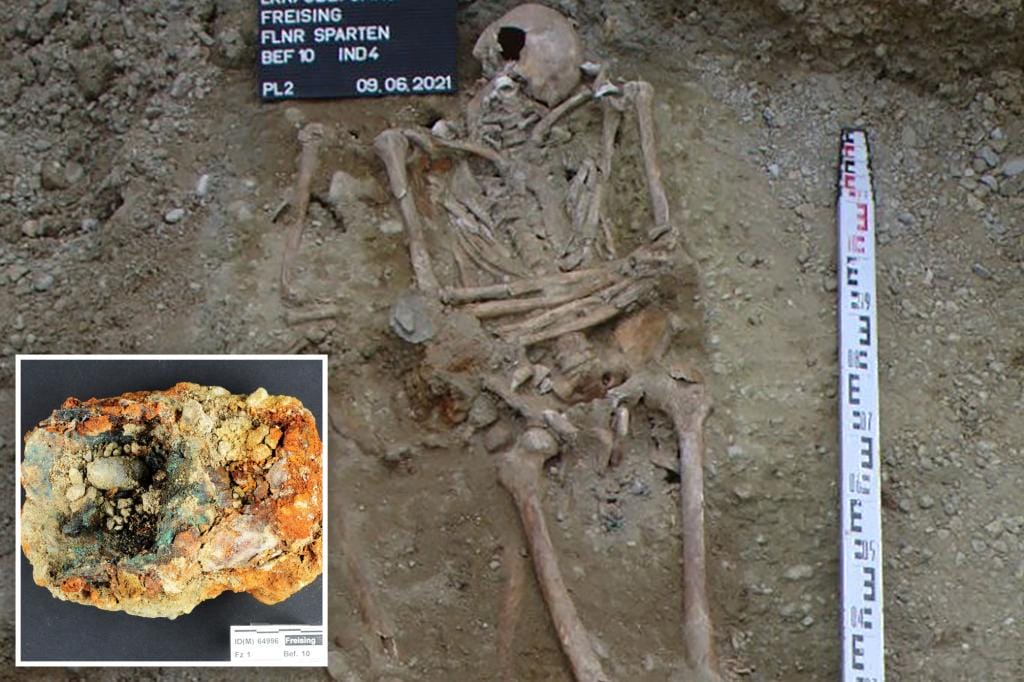Archaeologists in Germany have discovered the remains of a medieval man with a centuries-old “sophisticated” iron prosthetic hand.
The complete skeleton of a middle-aged man at the time of his death was accidentally discovered by pipeline workers near the parish church of St. George in Freising, a Bavarian town 24 miles northeast of Munich.
“Even for experienced archaeologists, this was a particularly special find: a skeleton with parts of the fingers of the left hand missing,” the Bavarian State Monument Conservation Office said in a statement.
The skeleton of a medieval man with an iron prosthesis in his left hand was found.Bayerisches Landesamt für Denkmalpflege/Facebook
Scientists removed the incredibly intricate prosthetic made of iron and non-ferrous metals and discovered that the man was missing all of his fingers except his thumb, probably as a result of an amputation.
The prosthesis was probably covered in leather, and a restorer found wrinkled tissue inside the fingers. A gauze-like cloth was probably used to cushion the stumps of the man’s hand while he carried the contraption.
“The hollow hand prosthesis on the left hand added four fingers. The index, middle, ring and little fingers are individually formed from sheet metal and are immobile,” explained Dr. Walter Irlinger, head of the Bavarian Department of Conservation of Archaeological Monuments.
Pipeline workers accidentally made this incredible find. Bayerisches Landesamt für Denkmalpflege/Facebook The man was missing all his fingers except his thumb, probably as a result of an amputation. Bayerisches Landesamt für Denkmalpflege/FAcebook The incredibly complex hand made of iron and non-ferrous metals.Bayerisches Landesamt für Denkmalpflege/FAcebook
“The replicas of the fingers are parallel to each other, slightly curved. “Presumably, the prosthesis was made with straps on the stump of the hand tied.”
Radiocarbon dating reveals that the man, probably between 30 and 50 years old, died between 1450 and 1620, the scientists concluded.
“That is to say: already at that time doctors were thinking about how they could make life easier for amputees,” says the state office.
The find is rare: only approximately 50 prostheses are known from Central Europe during the Late Middle Ages and early Modern Age.
The most famous of that time was the “Iron Hand” used by the German imperial knight Götz von Berlichingen after losing his hand to a cannon shot during a war in 1504.
Categories: Trending
Source: vtt.edu.vn
